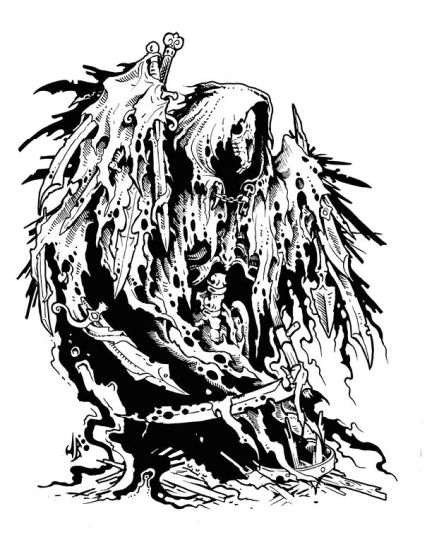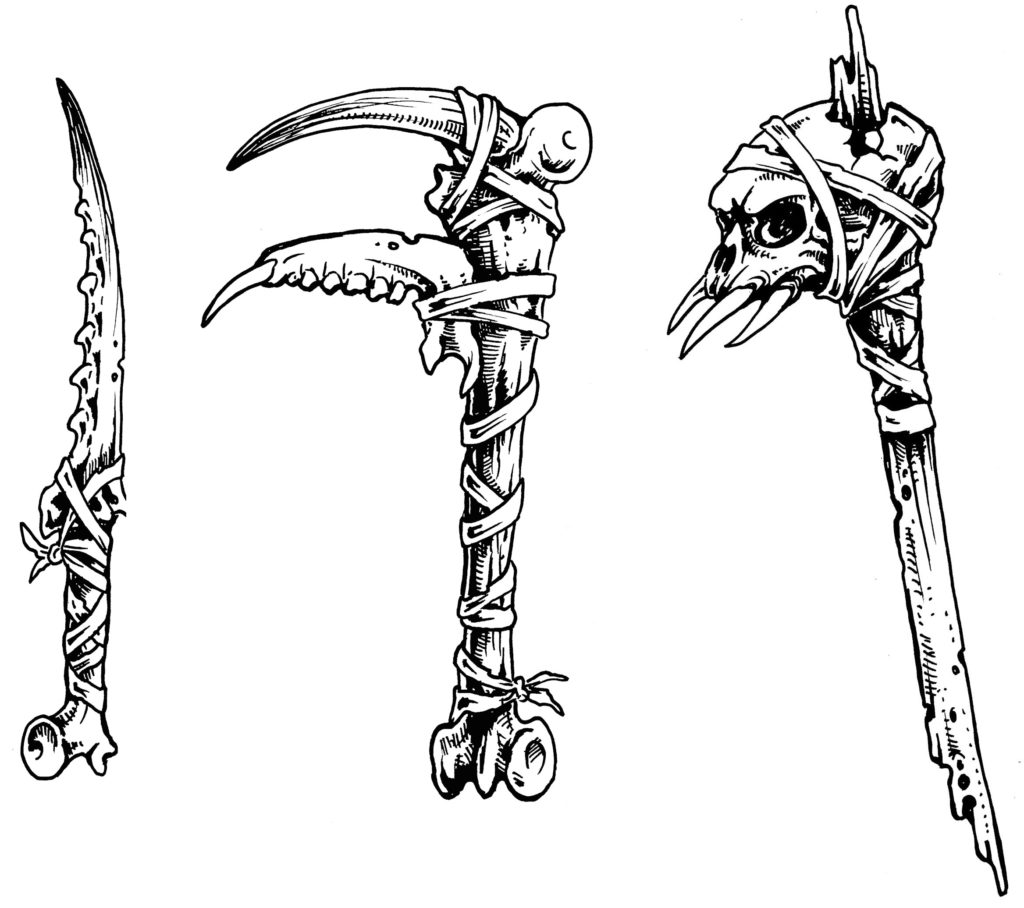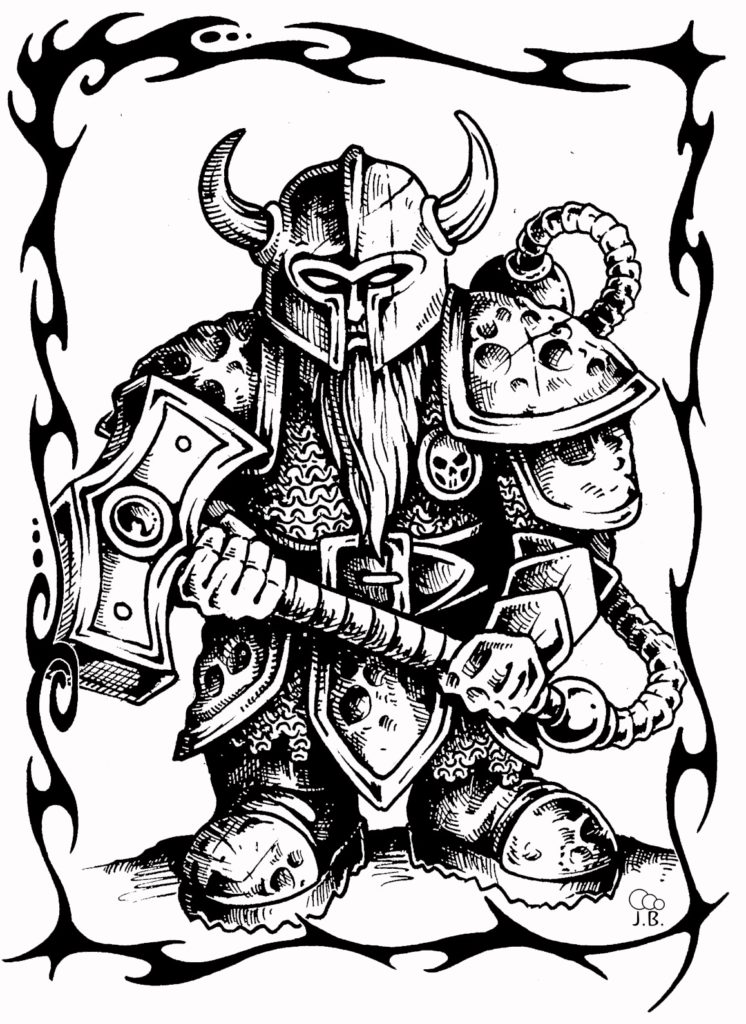The Arrach
Welcome to 2021, and Merry Christmas!
Let’s kick off the New Year with another For Gold & Glory monster. This is inspired by Jack Badashski’s Reaper.
Arrach
Climate/Terrain: Any
Frequency: Rare
Number Appearing: 1d8+2
Organization: Squad
Activity Cycle: Night
Intelligence: 13-14
Treasure: C (magic items are armor or weapons only)
Alignment: Lawful evil
Armor Class: 3
Movement: 12, fly 24 (MC 2)
Hit Dice: 6+6 (33 hp)
THACO: 15
Attack: 2 by weapon
Saving Throws: Fighter 7
Special Traits: Dancing weapons, magical weapons needed to hit, snares, spell immunities
Magic Resistance: None
Size: Man-sized (about 6′ tall)
Morale: 15
Experience: 3,000
The arrach are semi-corporeal undead, shadowy figures of bone, tattered robes, and blood-stained weapons, held together by malice and bloodlust. By day, the arrach wait impatiently in sunless places. After the sun sets, the arrach rush from hiding, seeking victims in a vain attempt to sate their hunger to inflict pain and death.
Arrach hunt in squads that operate with martial discipline. They fight intelligently and ruthlessly, not hesitating to retreat in order to survive long enough to fight again.
Arrach speak whatever languages they knew in life. Most arrach were evil soldiers of some sort who died violently.
Combat: Arrach attack with weapons, favoring swords, scythes, and spears. Each arrach carries 1d4+2 weapons and 1d3 bear traps. These weapons and traps are carried by folds of tattered cloth, skeletal limbs, et cetera. The round after an arrach’s weapon inflicts damage against a living foe, the weapon animates, flying up to 30 feet per round but never moving more than 30 feet from its owner. An animated weapon attacks once per round for four rounds, using the arrach’s THAC0. After four rounds, an animated weapon returns to its owner. The arrach’s dancing weapon attacks are in addition to its normal attacks.
The arrach’s bear traps pose a more subtle threat. Each trap functions much like a snare spell cast by a 6th-level priest, except that the arrach cannot use a tree, and the beartrap inflicts 1d6+1 points of damage. Each beartrap can be used once per night, and the arrach must spend three rounds setting the trap for it to function.
Arrach are immune to normal weapons and cold-based attacks. Nonmagical silver weapons inflict only half damage to them. As undead creatures, they cannot be affected by charm, hold person, and sleep spells. Poison and paralysis are likewise powerless against them. Holy water inflicts 2d4 points of damage per vial to an arrach, and sunlight renders this monster powerless and vulnerable to mundane weapons.





